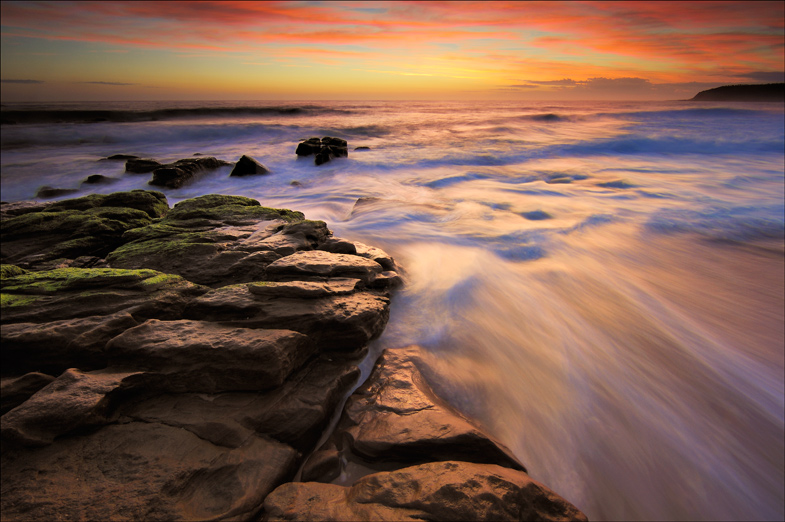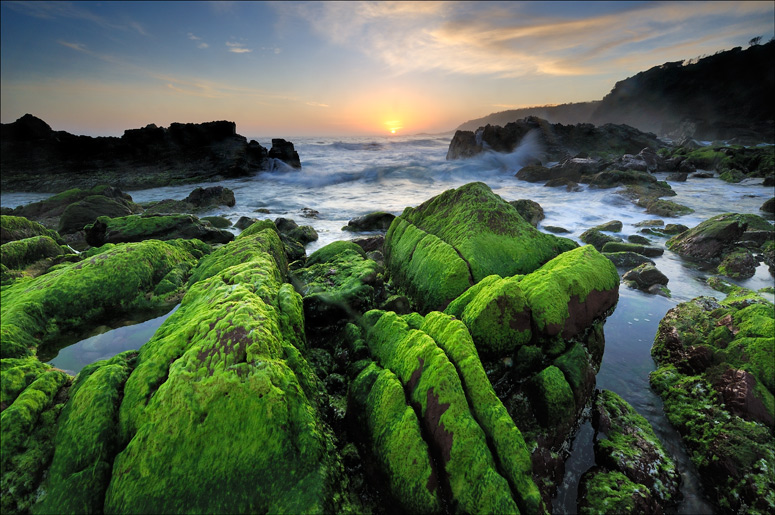Lee SW150 Filter Starter Kit
The SW150 is a filter system is made by the Lee Filter Co specifically for the Nikon 14-24 and has only just been released to the market after many months in the making. Prior to this system becoming available, my 14-24 stayed in the camera bag for the sunrise/sunset shots in favour of the 17-35 which does take filters.
Supplies of the SW150 even now are very scarce (which is the case for many of Lees products) and I note that B&H are out of stock and not expecting supplies in for 6+ weeks.
The system is not cheap - B&H is one of the cheapest at US $375 + shipping. Vanbar has exactly the same starter kit for $660.
So what do you get for your money?
• 1X 170X150 ND Grad Hard .6 (2 stop) resin filter + case
• 1 X Mounting collar
• 1 X Compression ring
• Filter holder +case
• 1 X Neoprene lens cover
• 2 X Baffles
• 1 X cleaning cloth
• Directions for assembly

Once the mounting collar is fitted to the lens it can remain there as the filter holder can be fitted and removed as and when required. In this situation, the Lee neoprene lens cover can be used as a substitute for the Nikon supplied lens cap.


I was expecting the filter holder to take 2 filters but the standard filter holder as delivered is only configured for 1. The filter holder however rotates 360 degrees.

Based on the promotional material that I had seen, I wasn’t expecting the inclusion of baffles as part of the kit. I did try some shots without the baffles but believe me they are there for a good reason.
Here is a pic showing the baffles and comparing the SW150 to the standard 100mm filter holder

...and here is what happens without the baffles in place. Take note of the top corners

Even with the baffles in place, I did (on some occasions) note some annoying stray reflections affecting the image which thankfully could be fixed in PP. I didn’t note any vignetting on any of the images.

No issues with this one.

....and one for Gerry

One other useful accessory well worth considering is a system adaptor which allows you to attach the 170X150 filter holder and filters onto any standard Lee adaptor ring enabling its use on other lenses i.e. the SW150 filter holder and filters can be used on say the Nikon 17-35mm lens.


Comparison of the 170X150 and the 100mm filters

In summary, the kit is not cheap but it does allow the use of what is regarded as one of the best wide angle lenses on the market in situations that previously you wern't able to.
Supplies of the SW150 even now are very scarce (which is the case for many of Lees products) and I note that B&H are out of stock and not expecting supplies in for 6+ weeks.
The system is not cheap - B&H is one of the cheapest at US $375 + shipping. Vanbar has exactly the same starter kit for $660.
So what do you get for your money?
• 1X 170X150 ND Grad Hard .6 (2 stop) resin filter + case
• 1 X Mounting collar
• 1 X Compression ring
• Filter holder +case
• 1 X Neoprene lens cover
• 2 X Baffles
• 1 X cleaning cloth
• Directions for assembly

Once the mounting collar is fitted to the lens it can remain there as the filter holder can be fitted and removed as and when required. In this situation, the Lee neoprene lens cover can be used as a substitute for the Nikon supplied lens cap.


I was expecting the filter holder to take 2 filters but the standard filter holder as delivered is only configured for 1. The filter holder however rotates 360 degrees.

Based on the promotional material that I had seen, I wasn’t expecting the inclusion of baffles as part of the kit. I did try some shots without the baffles but believe me they are there for a good reason.
Here is a pic showing the baffles and comparing the SW150 to the standard 100mm filter holder

...and here is what happens without the baffles in place. Take note of the top corners

Even with the baffles in place, I did (on some occasions) note some annoying stray reflections affecting the image which thankfully could be fixed in PP. I didn’t note any vignetting on any of the images.

No issues with this one.

....and one for Gerry

One other useful accessory well worth considering is a system adaptor which allows you to attach the 170X150 filter holder and filters onto any standard Lee adaptor ring enabling its use on other lenses i.e. the SW150 filter holder and filters can be used on say the Nikon 17-35mm lens.


Comparison of the 170X150 and the 100mm filters

In summary, the kit is not cheap but it does allow the use of what is regarded as one of the best wide angle lenses on the market in situations that previously you wern't able to.